文章目录
- 1.list类的介绍
- 2.list的基本用法
- 2.1 基本用法
- 2.2 迭代器失效
- 2.3 reverse(逆置)
- 2.3 sort(排序)
- 2.4 unique(去重)
- 2.5 splice(转移)
- 3.list的底层(模拟实现)
- 3.1 list的++
- 3.2 修改链表问题
- 3.3 完整代码
1.list类的介绍
list是可以在常数范围内在任意位置进行插入和删除的序列式容器,并且该容器可以前后双向迭代。list的底层是双向链表结构,双向链表中每个元素存储在互不相关的独立节点中,在节点中通过指针指向其前一个元素和后一个元素。
2.list的基本用法
2.1 基本用法
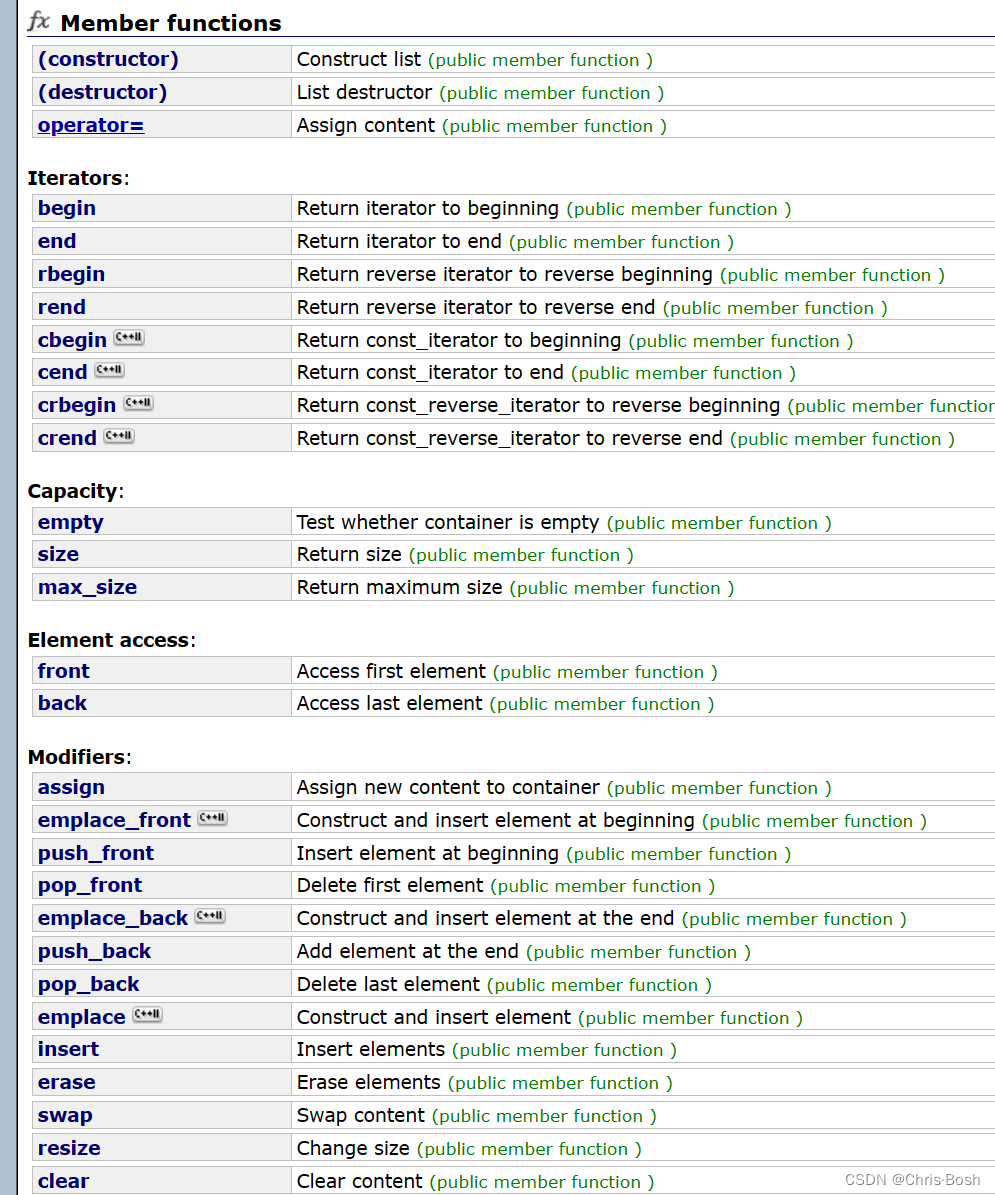
前面的用法大多都和string和vector差不都,这些用法就不再赘述!
2.2 迭代器失效

2.3 reverse(逆置)
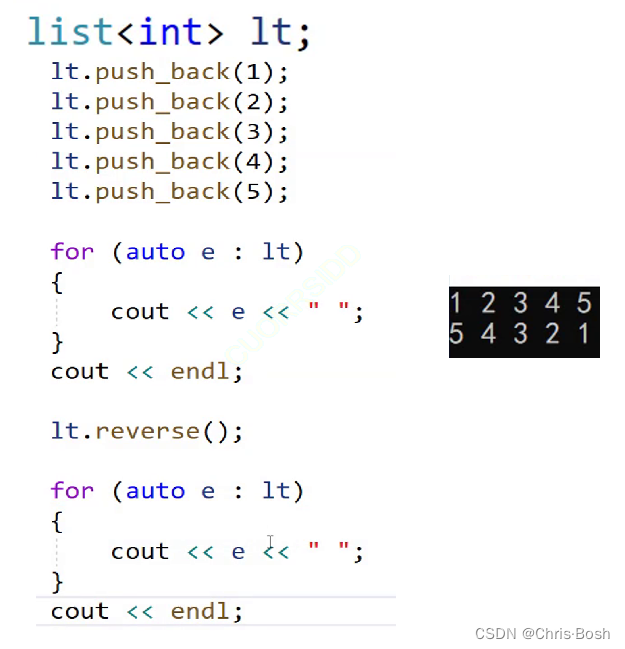
2.3 sort(排序)
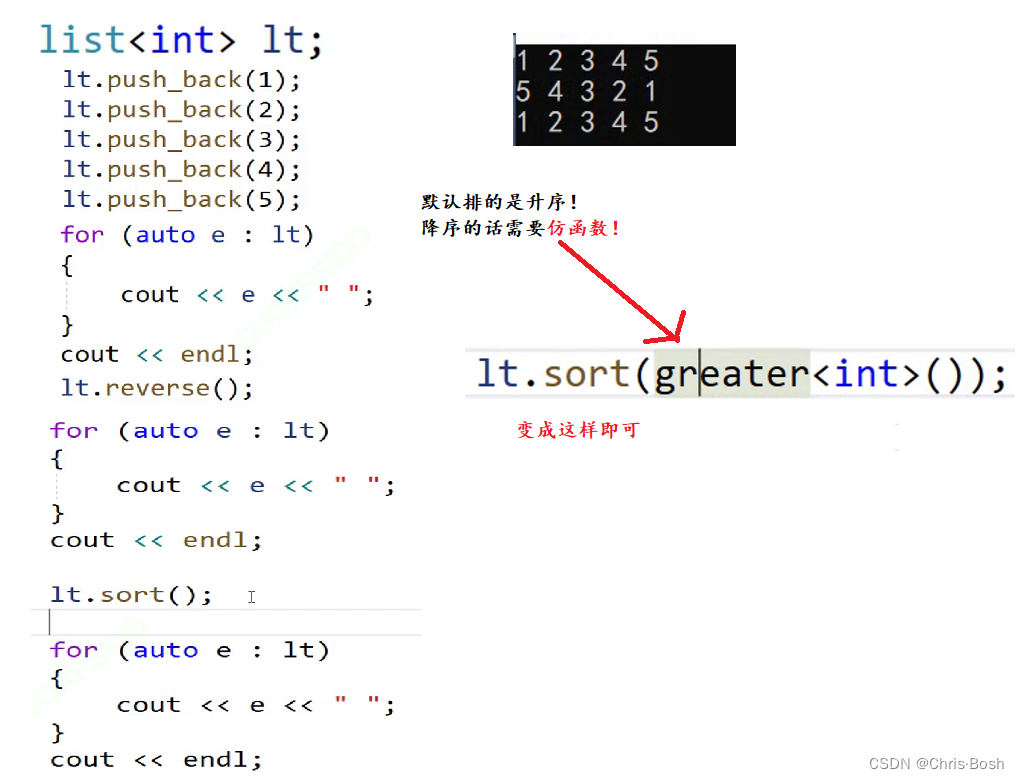
2.4 unique(去重)
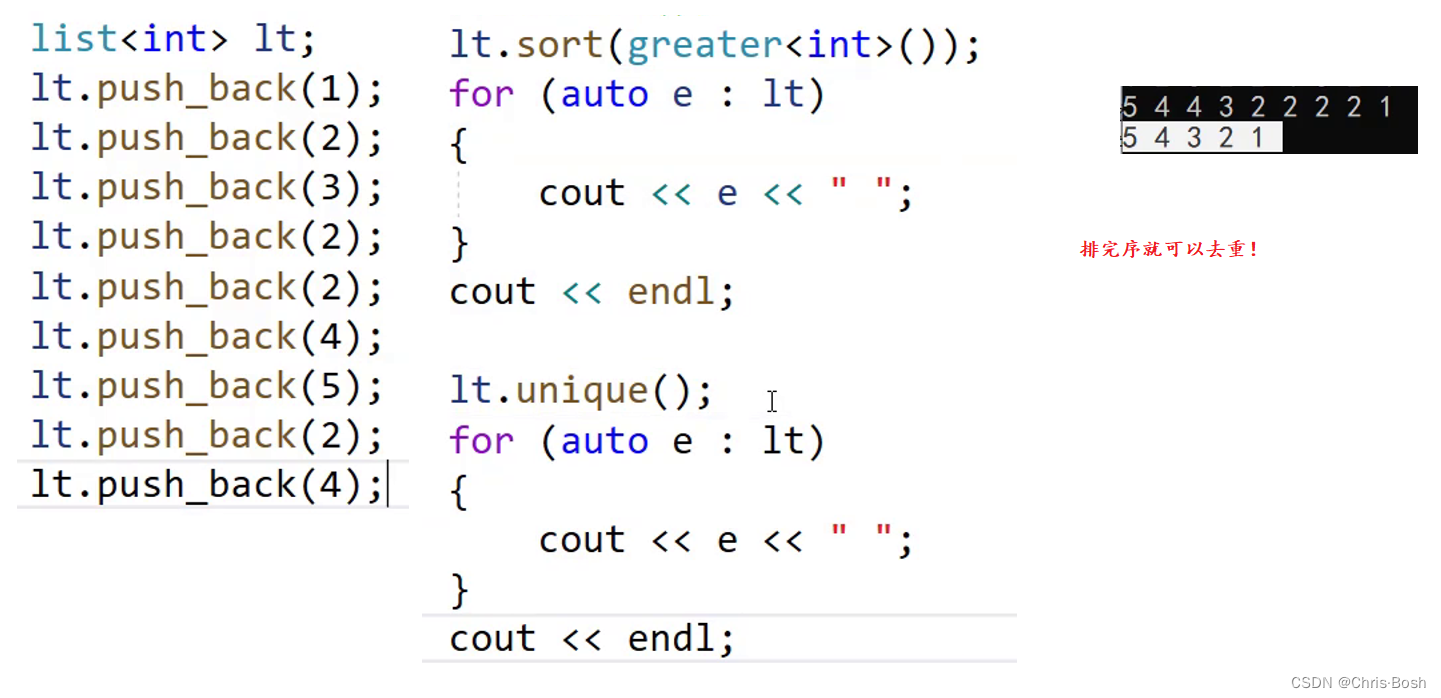
2.5 splice(转移)
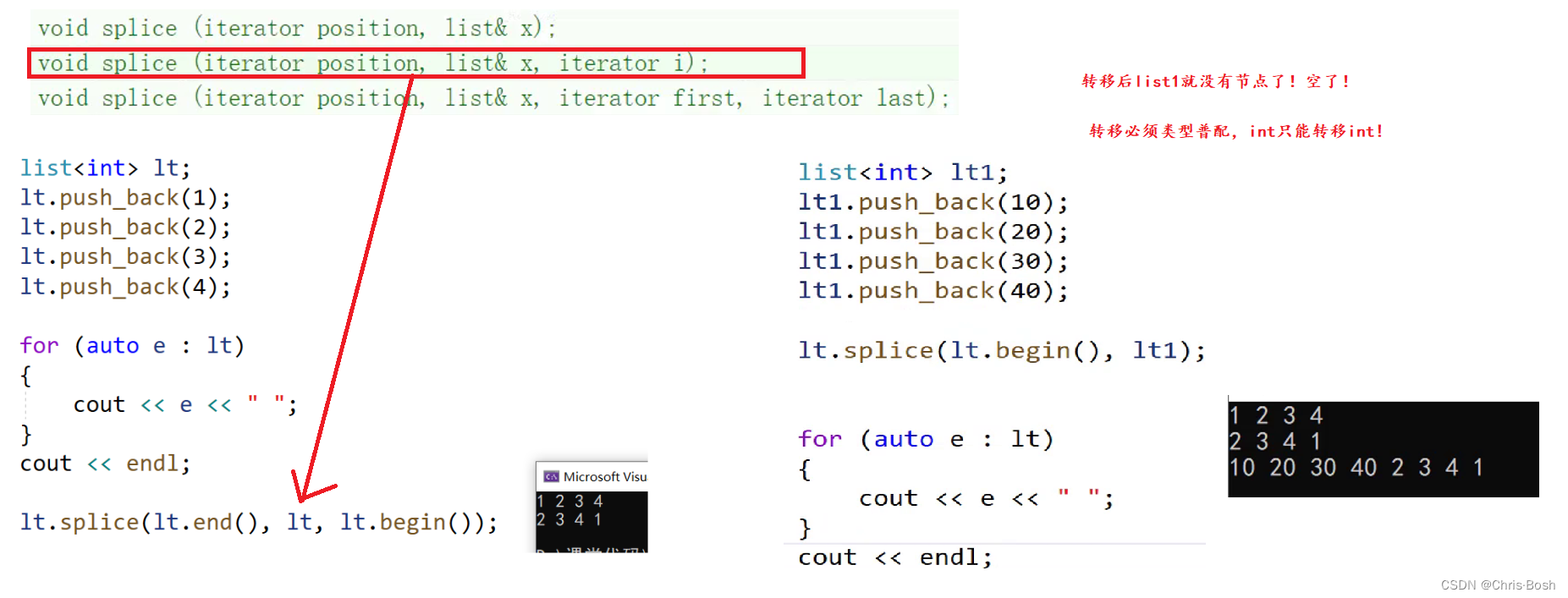
3.list的底层(模拟实现)
3.1 list的++
大致思路还是和之前一样的,但是List这里有需要专门说明的地方!
因为list的存储空间不像vector一样是连续的,链表吗,就是一个地址连一个地址。
所以它不能像vector一样随便的++和+n这样操作。
所以我们需要typedef一个模板,来重载我们的运算符!
template<class T>struct ListIterator{typedef ListNode<T> Node;typedef ListIterator<T> Self;Node* _node;ListIterator(Node* node):_node(node){}// *itT& operator*(){return _node->_data;}// it->T* operator->(){return &_node->_data;}// ++it前置++Self& operator++(){_node = _node->_next;return *this;}//it++后置++Self operator++(int){Self tmp(*this);_node = _node->_next;return tmp;}//同样的还有前置--Self& operator--(){_node = _node->_prev;return *this;}//后置--Self operator--(int){Self tmp(*this);_node = _node->_prev;return tmp;}bool operator!=(const Self& it){return _node != it._node;}bool operator==(const Self& it){return _node == it._node;}};
3.2 修改链表问题
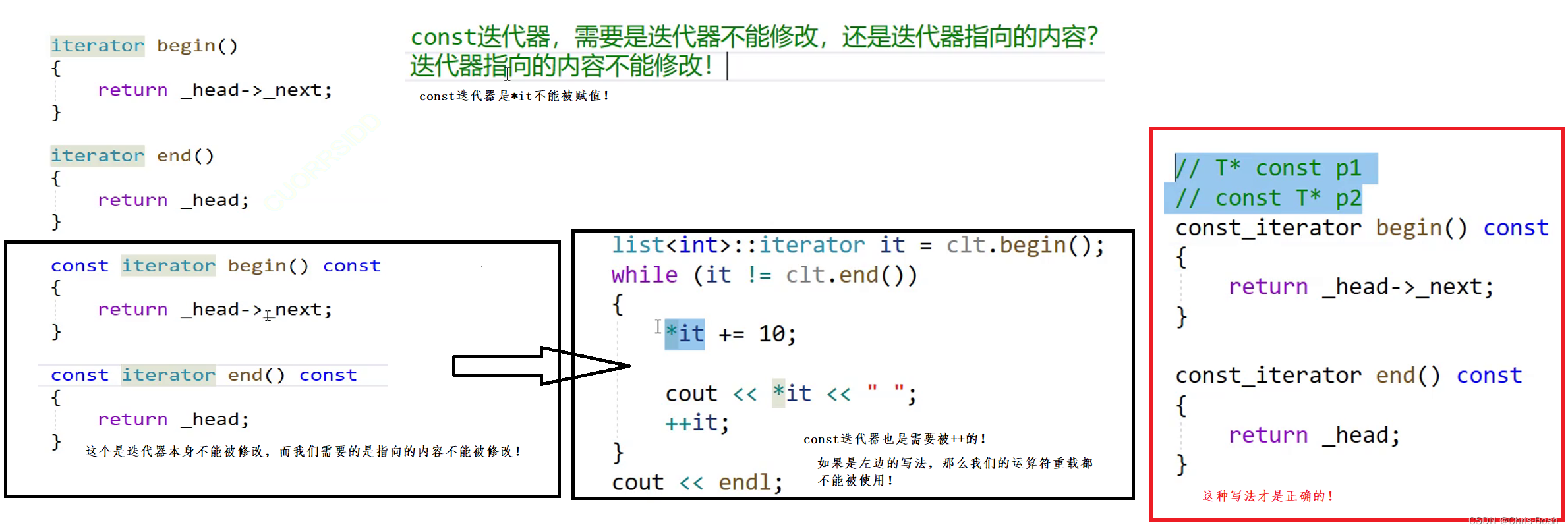
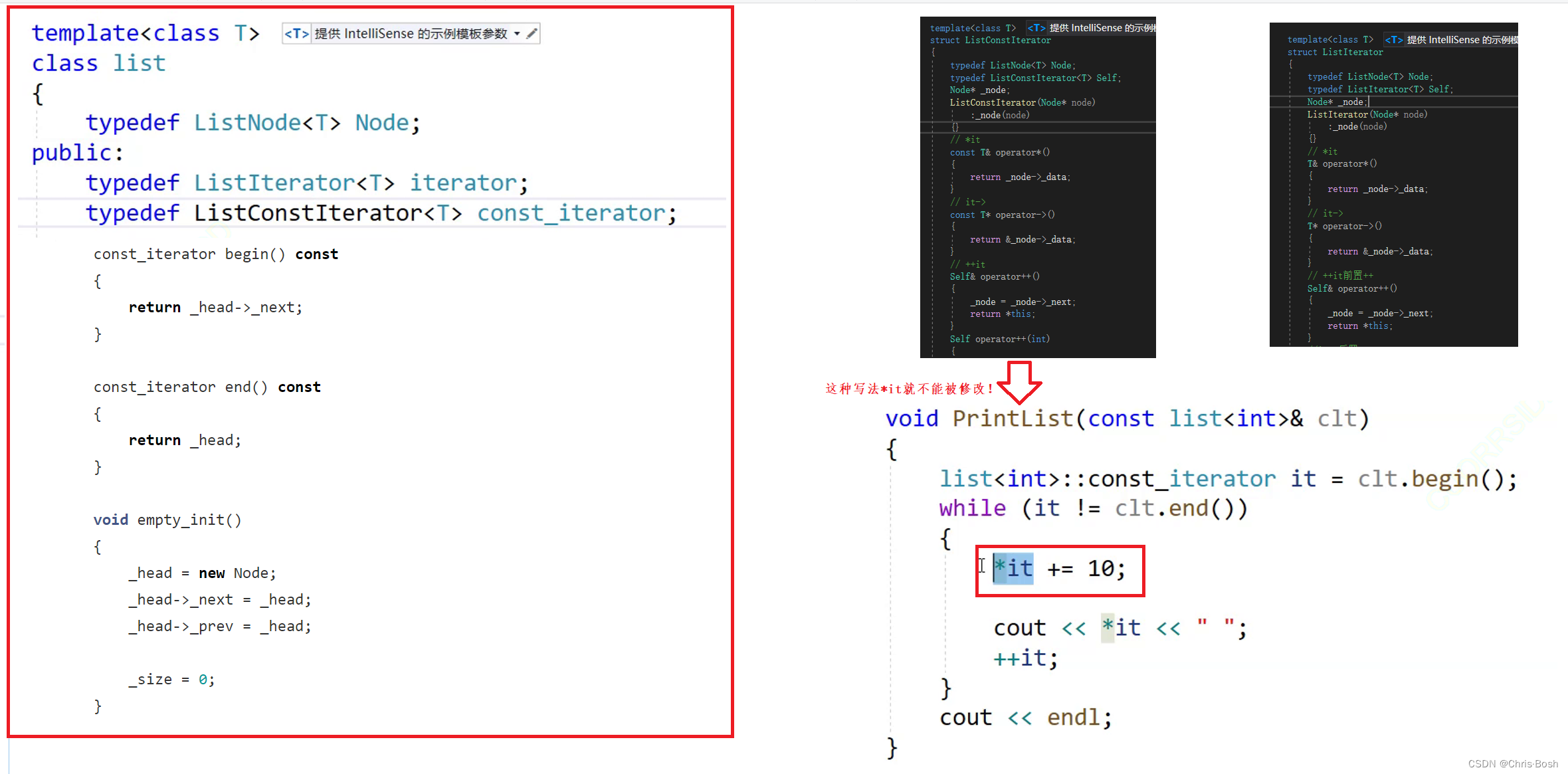
但是这样分别写两个ListIterator和ListConstIterator就非常的浪费,那么有没有什么办法合二为一呢?
添加类模板参数!
3.3 完整代码
mylist.h:
#pragma once
#include<iostream>
using namespace std;namespace my
{// List的节点类template<class T>struct ListNode{ListNode<T>* _pPre;ListNode<T>* _pNext;T _val;ListNode(const T& val = T()):_pNext(nullptr), _pPre(nullptr), _val(val){}};//List的迭代器类template<class T, class Ref, class Ptr>class ListIterator{typedef ListNode<T>* PNode;typedef ListIterator<T, Ref, Ptr> Self;public:PNode _pNode;public:ListIterator(PNode pNode = nullptr):_pNode(pNode){}ListIterator(const Self& l): _pNode(l._pNode){}T& operator*(){return _pNode->_val;}T* operator->(){return &_pNode->_val;}Self& operator++()//前置++{_pNode = _pNode->_pNext;return *this;}Self operator++(int)//后置++{Self tmp(*this);_pNode = _pNode->_pNext;return tmp;}Self& operator--(){_pNode = _pNode->_pPre;return *this;}Self& operator--(int){Self tmp(*this);_pNode = _pNode->_pPre;return tmp;}bool operator!=(const Self& l) const{return _pNode != l._pNode;}bool operator==(const Self& l) const{return _pNode == l._pNode;}};//list类template<class T>class list{typedef ListNode<T> Node;typedef Node* PNode;private:void CreateHead(){// 创建头节点_pHead = new Node;_pHead->_pNext = _pHead;_pHead->_pPre = _pHead;_size = 0;}PNode _pHead;size_t _size;public:typedef ListIterator<T, T&, T*> iterator;typedef ListIterator<T, const T&, const T&> const_iterator;public:///// List的构造void empty_init(){_pHead = new Node;_pHead->_pNext = _pHead;_pHead->_pPre = _pHead;_size = 0;}list(){empty_init();}list(int n, const T& value = T()){// 创建包含 n 个值为 value 的节点的链表empty_init();for (int i = 0; i < n; ++i) {push_back(value);}}template <class Iterator>list(Iterator first, Iterator last){// 通过迭代器范围 [first, last) 创建链表empty_init();while (first != last) {push_back(*first);++first;}}list(const list<T>& l){empty_init();for (auto& e : l){push_back(e);}}list<T>& operator=(const list<T>& l){if (this != &l) {list<T> tmp(l);swap(tmp);}return *this;}~list(){clear();delete _pHead;_pHead = nullptr;}///// List Iteratoriterator begin(){return _pHead->_pNext;}iterator end(){return _pHead;}const_iterator begin() const{return _pHead->_pNext;}const_iterator end() const{return _pHead;}///// List Capacitysize_t size()const{return _size;}bool empty()const{return _size == 0;}// List AccessT& front(){// 返回链表的第一个元素return _pHead->_pNext->_val;}const T& front()const{// 返回链表的第一个元素(常量版本)return _pHead->_pNext->_val;}T& back(){// 返回链表的最后一个元素return _pHead->_pPre->_val;}const T& back()const{// 返回链表的最后一个元素return _pHead->_pPre->_val;}// List Modify/*void push_back(const T& x){Node* newnode = new Node(x);Node* tail = _head->_prev;tail->_next = newnode;newnode->_prev = tail;newnode->_next = _head;_head->_prev = newnode;}*/void push_back(const T& val) { insert(end(), val); }void pop_back() { erase(--end()); }void push_front(const T& val) { insert(begin(), val); }void pop_front() { erase(begin()); }// 在pos位置前插入值为val的节点iterator insert(iterator pos, const T& val){Node* cur = pos._pNode;Node* newnode = new Node(val);Node* prev = cur->_pPre;prev->_pNext = newnode;newnode->_pPre = prev;newnode->_pNext = cur;cur->_pPre = newnode;_size++;return iterator(newnode);}// 删除pos位置的节点,返回该节点的下一个位置iterator erase(iterator pos){Node* cur = pos._pNode;Node* prev = cur->_pPre;Node* next = cur->_pNext;prev->_pNext = next;next->_pPre = prev;delete cur;_size--;return iterator(next);}void clear(){iterator l = begin();while (l != end()){l = erase(l);}}void swap(list<T>& l){std::swap(_pHead, l._pHead);std::swap(_size, l._size);}};void test_list1(){my::list<int> lt;lt.push_back(1);lt.push_back(2);lt.push_back(3);lt.push_back(4);lt.push_back(5);// 使用迭代器遍历链表并修改元素值for (auto it = lt.begin(); it != lt.end(); ++it){*it += 10; // 通过迭代器访问元素值cout << *it << " ";}cout << endl;lt.push_front(10);lt.push_front(20);lt.push_front(30);// 使用范围-based for 循环遍历链表for (auto& e : lt){cout << e << " ";}cout << endl;lt.pop_back();lt.pop_back();lt.pop_front();lt.pop_front();// 再次使用范围-based for 循环遍历链表for (auto& e : lt){cout << e << " ";}cout << endl;}
};
main.cpp:
#define _CRT_SECURE_NO_WARNINGS 1
#include"mylist.h"int main()
{my::test_list1();return 0;
}



v-bind动态属性绑定)

)


之DOM操作元素属性和定时器)
)







)


)